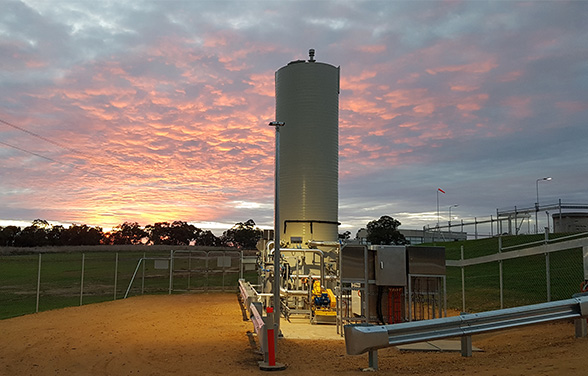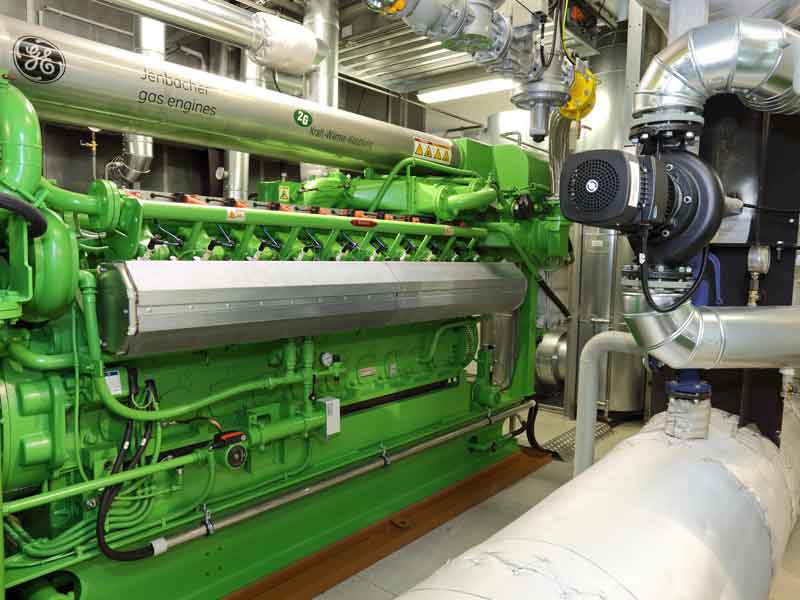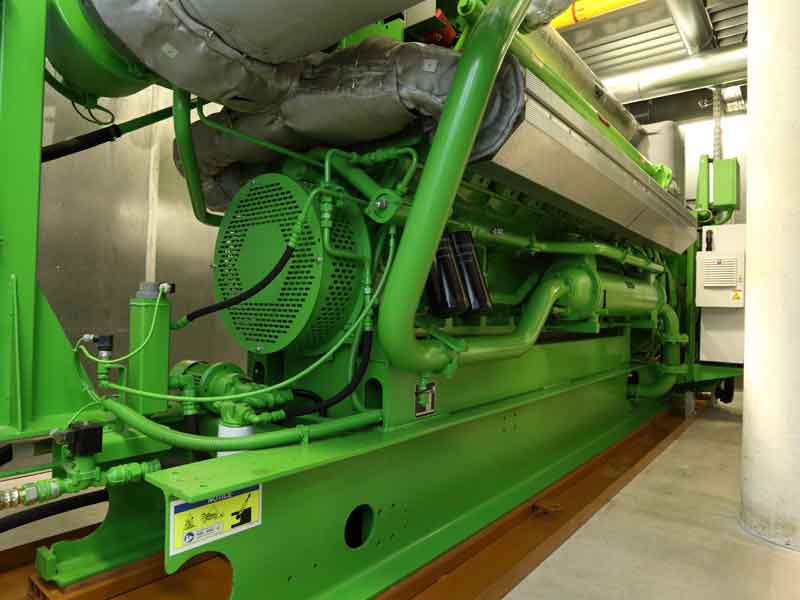Product Gallery
Fields of use for the AVUS by 2G
- Enercon in Aurich uses the energy generated by three Avus 1000c to manufacture rotor blades for wind power plants.
- Two Avus 1500c combined heat and power plants are at the heart of the new power house at the main Merck facility in Darmstadt, the oldest pharmaceutical and chemicals company in the world. Both plants are capable of continuously supplying 5,500 detached homes with electricity and heat.
- Nordgetreide has installed an Avus 800a by 2G at the Falkenhagen site. With electrical output of 835 kilowatts, the Avus covers almost the entire electricity requirement of the production facility. Via a steam generator, the waste heat produced from combined heat and power generation is used to supply around 600 kilograms of steam per hour for production.
- At OSRAM in Regensburgone, the leading lighting manufacturers in the world, two highly efficient Avus 500 plus CHP plants are used to generate electricity and heat.
- 2G undertook a turn-key installation of a biomethane gas-operated CHP plant with an electrical output of 4.4 megawatts and a thermal output of 4.1 megawatts for STEAG New Energies in Essen, and integrated it in the existing district heating system. The highly efficient 2G plant which runs on the renewable fuel biomethane replaces part of a coal-fired heating system.
Avus 550 to 2,000kW
NATURAL GAS
| Type | Output | Efficiency level | ||||
| Configuration | Electrical | Thermal | Electrical | Thermal | Overall | |
| Avus 500 plus | bt80-1 | 550kW | 723kW | 39.8% | 52.3% | 92.1% |
| ct80-1 | 550kW | 578kW | 42.6% | 44.7% | 87.3% | |
| ct70-1 | 550kW | 596kW | 40.8% | 44.2% | 85.0% | |
| Avus 500a | D205-F | 527kW | 630kW | 40.2kW | 48.0% | 88.2% |
| Avus 500b | D05-F | 637kW | 739kW | 40.9% | 47.4% | 88.3% |
| Avus 500c | C | 600kW | 658kW | 41.9% | 46.0% | 87.9% |
| Avus 800a | D05-F | 851kW | 991kW | 40.7% | 47.3% | 88% |
| Avus 800b | B05-F | 901kW | 931kW | 42.9% | 44.4% | 87.3% |
| Avus 800c | C | 800kW | 861kW | 42.3% | 45.5% | 87.8% |
| Avus 1000a | D05-F | 1,067kW | 1,241kW | 40.9% | 47.6% | 88.5% |
| Avus 1000b | B05-F | 1,203kW | 1,237kW | 43.1% | 44.2% | 87.3% |
| Avus 1000c | C | 1,200kW | 1,191kW | 43.6% | 43.3% | 86.9% |
| Avus 1500b | B05-F | 1,501kW | 1,543kW | 43.0% | 44.2% | 87.2% |
| Avus 1500c | C | 1,560kW | 1,580kW | 43.2% | 43.8% | 87% |
Patruus. 263 kW. Natural Gas
Patruus 140 - as80-0
Output
- Electrical
- 140 kW
- 263 kW
- Thermal
- 207 kW
- 380 kW
Effeciency Level
- Electrical
- 36.5%
- 38.0%
- Thermal
- 53.9%
- 54.9%
- 90.4%
- 92.9%
Patruus. 50 to 64 kW. Biogas
Patruus 140 - as80-0
Output
- Electrical
- 140 kW
- 263 kW
- Thermal
- 207 kW
- 380 kW
Effecientcy Level
- Electrical
- 36.5%
- 38.0%
- Thermal
- 53.9%
- 54.9%
- 90.4%
- 92.9%
Additional Equipment
Evo Energy Technologies offer a wide range of additional equipment including:
- Addition of gas
- Additional heat applications
- Heat storage distribution
- Data interfaces
- Mains back up & starter device
- Warm country version
- Exhaust gas post-treatment
- Variants of oil supply
- Measurement instrumentation
To see our full range of equipment click below.
Rapid installation - completed in less than 2 days
2G Easy Plug & Play Solutions
Featured Projects

Teys Australia Naracoorte Biogas Cogeneration Project
Teys Australia is one of the largest beef producers in Australia. They have recently partnered with Evo Energy Technologies and installed a Biological Scrubber and a 2G Avus500plus 550kW Biogas Cogeneration engine in a 7m x3m x3m container module with gas dehumidification and active carbon filtration. Teys Australia can expect 2,500MWh of renewable energy yearly due to their new infrastructure.

Rivalea Biogas Cogeneration Project
Rivalea (Australia) Pty Ltd is one of Australia’s leading pork producers. In 2017 Rivalea fulfilled a long term goal to harness the power of the naturally occurring methane generated in its waste water treatment ponds. The successful implementation of a custom-built 500 kW combined heat and power unit in partnership with Evo Energy Technologies and 2G Energietechnik achieves significant cost savings, reduces environmental impact and takes load from the grid which is then available to other users.
















